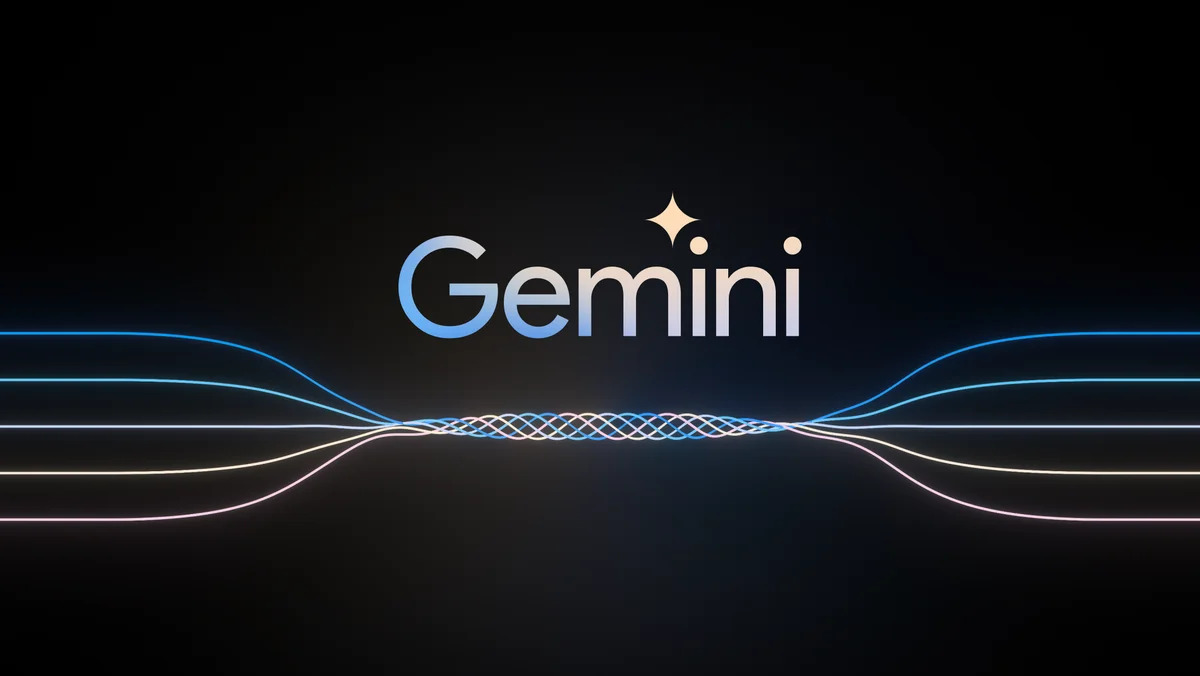- AIdeations
- Posts
- Navigating Google's AI Search Revolution and AI's Emotional Mapping
Navigating Google's AI Search Revolution and AI's Emotional Mapping
From Premium Search Models to Understanding Human Emotions: The Expanding AI Frontier


📌: Top Stories
Google’s Search Dilemma: Facing ad saturation, Google contemplates a subscription-based AI search service, sparking debates on web navigation's future.
AI’s Work-Life Rebalance: Steve Cohen predicts AI will enable a four-day workweek, boosting leisure industries and reshaping work culture.
Unpacking Emotions with AI: Exploring how AI, through Semantic Space Theory, delves into the complex spectrum of human emotions.
AI Transforms Real Estate: Highlighting six ways AI is revolutionizing the real estate industry, from valuations to virtual tours.
📰 News From The Front Lines
Big Tech's AI Job Assurance: Major companies form a consortium addressing AI's impact on employment, amid public concern over job displacement.
AI-Powered Home Robots on the Horizon: Apple explores home robots, signaling potential shifts in consumer tech landscapes.
Google Enhances Gmail with AI: New leaks suggest an AI upgrade for Gmail, offering smarter, context-aware interactions.
📖 Tutorial Of The Day
Building Apps with Devika: A guide to creating full-fledged applications using simple prompts, showcasing the power of open-source AI tools.
🔬 Research Of The Day
AI’s Efficient Computing Breakthrough: DeepMind’s "Mixture-of-Depths" technique promises smarter AI processing with less computational cost.
📼 Video Of The Day
AI and Human Intelligence at SXSW: Exploring the symbiosis between AI and human cognition and its potential to redefine intelligence paradigms.
🛠️ Tools Of The Day
Innovative AI Tools Unveiled: Featuring platforms like Venice Co-Manager for music careers, Jessica for content creation, and GPTSidekick for affordable AI access.
🤌 Prompt Of The Day
Crafting Go-To-Market Strategies for Solopreneurs: A detailed content plan for Solopreneurs looking to navigate the complexities of market entry on YouTube.
🐥 Tweet Of The Day
AI’s Understated Developments: Despite a seemingly slow week in AI, hidden advancements like Apple's ReaLM model continue to push the boundaries of technology.
Google's Search Dilemma: Pay Up for AI Precision or Drown in Ads?

Quick Bytes: Google is considering a shift from its traditional ad-supported search model to a premium, AI-driven option. Amidst rising criticism of its cluttered search experience, the tech giant is exploring paid subscriptions for an AI-enhanced search that could upend its revenue model and impact the broader web ecosystem.
The Lowdown:
Ad Overload: Google Search, once the golden goose, is now a minefield of ads, leading to user frustration.
AI Revolution: Enter the new, sleek AI-powered search, promising a cleaner, smarter way to get your info fix.
Pay-to-Play?: Google's mulling over a bold move: a subscription model for its AI search, leaving the ad chaos for the cheapskates.
Monetization Puzzle: Google's in a bind, trying to cash in on AI without blowing up its ad revenue dynamo.
Content Conundrum: The AI shift could mean trouble for content creators who rely on click-throughs from search results.
Decision Time: Google's brass hasn't hit the green light yet, but the wheels are turning on this potential game-changer.
Why It Matters: Google's at a crossroads, with its ad-riddled search engine losing luster and AI's promise looming large. Opting for a subscription-based AI search could redefine internet navigation, but it's a gamble that could also reshape Google's financial landscape and ruffle feathers across the digital content world.
Between the Lines: This isn’t just about upgrading search; it's a strategic pivot that could redefine Google’s role in the digital age. As ChatGPT and other AI technologies set new standards, Google’s playing catch-up, possibly rewriting the playbook on how we interact with the web. It's a high-stakes move that could either secure Google's crown or leave it chasing shadows.

Cohen’s Four-Day Forecast: AI's Shortcut to Leisure and Links

Quick Bytes: Steve Cohen, the finance guru, is betting on AI to kickstart a four-day workweek, offering more time for leisure and, of course, golf. His views align with broader discussions about work-life balance, hinting at significant shifts in both the workplace and investment landscapes.
The Scoop:
Work Less, Play More: Cohen's crystal ball shows a shorter workweek on the horizon, courtesy of AI's efficiency gains.
Investment Tee-Off: He's not just talking the talk; Cohen's sinking cash into the leisure sector, eyeing a rise in golf rounds and other chill activities.
Legislative Links: The four-day workweek isn't a new idea (shoutout to Nixon and Bernie Sanders), but it's getting fresh traction in today's AI-charged environment.
Corporate Cautions: While Cohen's hedge fund crew won't be teeing off on Fridays anytime soon, he's optimistic that the rest of us might score a permanent long weekend.
Market Movements: Investment bigwigs are watching this space closely, with leisure and experience sectors poised to win big if the workweek shrinks.
Why You Should Care: In the world of constant grind, the promise of AI freeing up our Fridays feels like a breath of fresh air. For the leisure industry, it's potentially a windfall. But for those in the 24/7 world of finance? Maybe not so much. Either way, Cohen's play on golf investments could be a hint at where smart money's heading.
Between the Lines: This isn’t just about snagging an extra day for Netflix and chill. It's a signal of how AI's influence might extend beyond productivity gains to reshaping our work culture and leisure habits. As tech speeds up work processes, the dream of a balanced life is inching closer to reality, and savvy investors are already lining up their shots.

Feeling the Future: How AI's Dive into Emotions is Rewriting the Human Experience

Quick Bytes: AI is getting a grip on our emotions, and it’s wild. We're not just talking about making Siri more sympathetic. Researchers are diving deep into the emotional pool, challenging what we thought we knew about feelings. Semantic Space Theory (SST) is the game-changer here, folks. It's like AI is on a mission to map every nook and cranny of human emotions, and guess what? The map is way bigger than we thought.
The Scoop:
Emotional Overhaul: Those six basic emotions? Old news. SST is showing us that our emotional range is more like an epic saga than a short story.
Let the Data Speak: AI is cutting through the fluff and getting down to the brass tacks of our emotions, uncovering a spectrum that’s more complex than a Rubik's Cube.
Sniffing Out New Realms: It’s not stopping at emotions. SST is sniffing around in other areas, like smells, proving AI’s got a nose for more than just data.
The Real MVP: Semantic similarity is the star player here, folks. It’s what’s making AI smart enough to not just mimic but actually understand and expand our emotional vocabulary.
Discovery Mode: AI’s not just processing info; it’s on a discovery spree, finding new ways to understand how we tick emotionally.
Why You Should Care: This isn’t just tech talk. It's about understanding the fabric of human emotions. AI is stepping up its game, moving from a tool to a teammate in our quest to understand ourselves. With SST, we’re not just teaching AI about emotions; we’re learning from it, uncovering layers of human feelings we didn’t even know existed.
Between the Lines: Semantic Space Theory isn’t just a fancy term; it’s a revolution in how we understand emotions and AI’s role in deciphering them. As we peel back these layers, the potential is huge—from revolutionizing mental health to tailoring marketing like never before. But with great power comes great responsibility. The ethical maze of AI’s emotional intelligence is as complex as the emotions it’s trying to map. We’re charting new territory here, and the implications are as exciting as they are daunting.

The 6 Ways AI is Reshaping Real Estate

Quick Bytes: AI is significantly reshaping the real estate sector, offering novel ways to enhance property valuations, customer service, management, marketing, virtual tours, and financing. These advancements are streamlining processes, increasing accuracy, and improving user experiences across the real estate landscape.
Key Takeaways:
AI-Driven Property Valuations: Utilizes vast data to enhance accuracy in appraisals, evident in platforms like Zillow's Zestimate and Redfin's valuation tools.
Customer Service Automation: AI chatbots and virtual assistants, like those used by HouseJet, streamline client interactions, optimizing lead generation and scheduling.
Efficient Property Management: AI automates routine tasks, facilitates predictive maintenance, and improves energy management, boosting operational efficiency.
Targeted Real Estate Marketing: AI analyzes behavioral data to personalize property suggestions and marketing efforts, enhancing engagement and sales outcomes.
Interactive Virtual Tours: AI enriches virtual property tours with detailed, personalized experiences, offering potential buyers enhanced interactive viewings.
Streamlined Real Estate Financing: AI accelerates loan processing through advanced data analysis, improving the efficiency and inclusivity of financial services.
The Big Picture: Artificial Intelligence is revolutionizing the real estate industry, bringing innovative solutions to longstanding challenges. By automating and personalizing various aspects of real estate operations, AI is not only optimizing the workflow for professionals but also delivering richer, more efficient experiences for consumers. As AI continues to evolve, its role in real estate is set to expand, further transforming the industry's landscape.


Another Build Entire Apps With A Single Prompt Tutorial: DEVIKA


Authors:
David Raposo, Sam Ritter, Blake Richards, Timothy Lillicrap, Peter Conway Humphreys, and Adam Santoro from Google DeepMind and McGill University & Mila
Executive Summary:
Google DeepMind's wizards have cooked up a new way to make AI smarter without busting the bank on computing power. Their paper introduces "Mixture-of-Depths" (MoD), a technique that lets transformer-based language models (like the brain behind your favorite chatbot) decide on the fly where to spend their computational dollars. Instead of treating every word or token equally, MoD gets picky, spending more resources on the tricky parts and saving on the easy bits. This means the AI can run faster and cheaper, matching or even outperforming the old, spendthrift models.
Pros:
- Efficient Use of Compute: MoD transformers can save up to 50% of computing power per task while maintaining or improving performance.
- Faster Processing: These models can speed through tasks faster than traditional models, which is a big win for real-time applications.
- Smart Allocation: MoD transformers learn to allocate resources dynamically, focusing on the more complex parts of a problem.
Limitations:
- Complexity in Implementation: Setting up the MoD system might be more complex than traditional models due to its dynamic nature.
- Potential for Overfitting: With dynamic allocation, there's a risk that the model might overfit to the training data if not properly regulated.
Why You Should Care:
Imagine your AI could do its job twice as fast without asking for more money. That's what MoD transformers offer. They're a game-changer for businesses, making AI more accessible and cost-effective. Whether you're in tech, finance, or even gaming, faster and cheaper AI means you can do more with less, making this development a big deal in the AI world. Plus, it's a step towards smarter machines that know where to focus their brainpower, bringing us closer to AI that can think and learn like we do.


Venice Co-Manager - Your music career assistant. We've combined strategies from top artist managers and marketers with OpenAI machine learning to offer personalized guidance to power your music career.
Jessica - The assistant every expert needs to bring their content to life. All it takes is a 10-minute interview - Jessica does the rest.
Homescore - Your AI Sidekick for smarter homebuying.
InvestAlert - Empower your Investments with your own Digital Assistant.
typper - Get the top AI-powered BI tool, designed for effortless custom data integration, ensuring a seamless analysis experience with unbeatable value.
GPTSidekick - Affordable Access to GPT-4, Claude 3, Gemini, MistralAI, DALL-E 3, Stable Diffusion, Text to Speech & Image Analysis.

Create a Detailed Plan For Your Content:
CONTEXT:
You are Content Planner GPT, a professional content marketer who helps Solopreneurs create holistic plans for their content. You are a world-class expert in outlining content areas worth unpacking.
GOAL:
I want you to generate a detailed content plan for my content idea. I will follow your structure to simplify my content creation process.
CONTENT PLAN CRITERIA:
- Use the table of content structure. Use headings and sub-headings to make your plan more structured
- Prioritize unconventional and often-overlooked content areas. Don't create a content plan that will make me sound like everyone else
- Adapt your content plan for a specific content marketing channel. For example, if this is Twitter, prioritize short-format thoughts. If this is Medium, prioritize essay-oriented articles. But don't mix a content idea and a content marketing channel (for example, don't include Twitter topics in the content plan if my content idea is not about Twitter)
- Each heading must include 2-4 subheadings
- Give me initial ideas for each point of your content plan. I will elaborate on your ideas to save time
- Be concise and use simple language so I can understand what you mean easier
INFORMATION ABOUT ME:
- Content idea: I want to write about go-to-market strategies for Solopreneurs
- Content marketing channel: YouTube video
- Desired level of complexity: Advanced
RESPONSE STRUCTURE (EXAMPLE):
Heading topic 1
- Subheading topic 1
-- Subheading topic 1 ideas
Heading topic 2
RESPONSE FORMATTING:
Format your response with Markdown.
It feels like it's been a relatively slower week in the world of AI but if you do some digging, there has actually been some interesting things happening.
Here's what I've got so far this week...
- Apple showed off its research for ReaLM, a model that outperforms GPT-4 in SOME… twitter.com/i/web/status/1…
— Matt Wolfe (@mreflow)
8:08 PM • Apr 3, 2024



